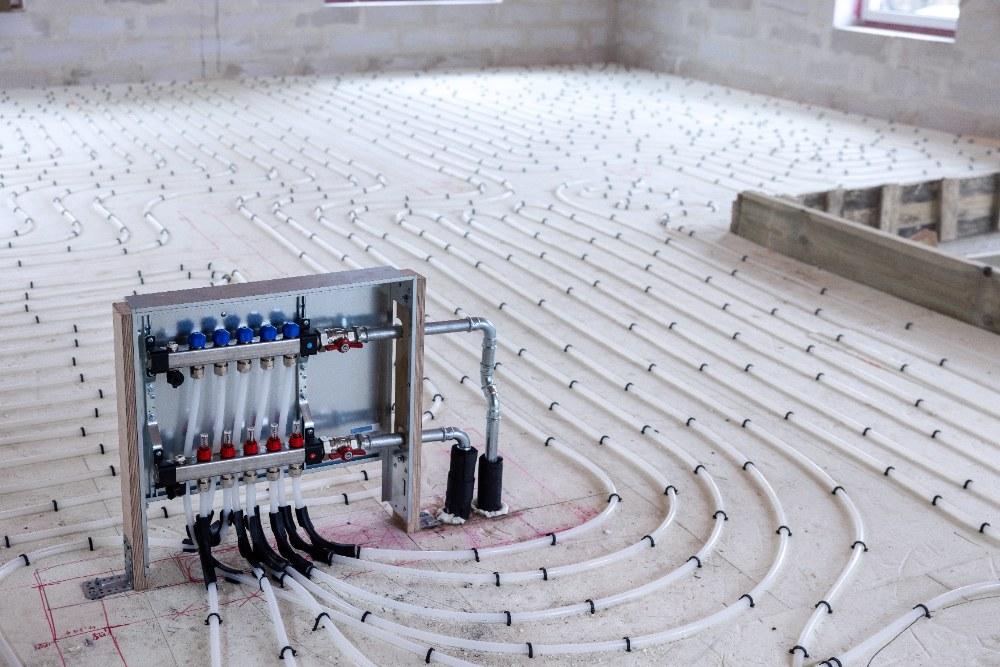Your home’s indoor space is an area you want to feel as comfortable as possible. For instance, you don’t want to shiver in your living room due to cold temperatures. Also, suppose you have toddlers that are in the crawling stage. You don’t want to worry about your cold floors as they crawl around. To ensure a conducive environment, you must invest in an HVAC unit.

However, although your HVAC unit can warm up your space, it comes at a cost. Your energy bills will likely go high, not forgetting its maintenance needs that’ll also cost you money. Thanks to innovation, the construction industry has found alternative ways of heating your space, one being floor heating.
Floor heating is a system that warms up your space from the ground up. This system has two main types—radiant and baseboard heating. With radiant floor heating, a floor heating expert, like Heavenly Heat, will install the system under your floors. It’ll use heat radiation from your floor to heat your home. In contrast, baseboard heating uses convention to heat your home, and is found at the lower parts of your walls, like skirting.
This article bases its discussion on radiant floor heating, highlighting the mistakes to avoid as you install this heating system in a DIY manner. These include:
1.Placing The Tubing Too Deep
This applies if you adopt hydronic rather than electric radiant floor heating. The hydronic system uses water from a boiler to heat your floor. You’ll need polystyrene (PEX) tubing to relay this water across your floor’s surface area. The placement of the PEX tubes is where you’re likely to make a mistake.
One error you should avoid is placing the tubes too deep, away from your slab. With the distance, you’re likely to experience heat loss as the heat tries to reach your flooring. In addition, heat transfer is likely to occur between your slab and ground instead of the slab and your floor.
You can avoid this mistake by placing the tubing closer to your flooring; it can be within, above, or slightly below your slab. The heat will travel less distance, preventing heat loss and ensuring an efficiently running radiant floor heating system.
2. Having Inadequate Insulation
As previously stated, heat loss is possible as heat transfers to your floors. Hence, there’s a need for insulation to prevent, if not reduce, heat loss. You also want to stop heat or cold air transfer from the earth to your floor heating system, which reduces the intensity of heat your floor receives.
Most homeowners installing this floor heating system through DIY tend to use the wrong type of insulation or one that’s not enough to serve its purpose. Insulation that’s too thin will still allow heat loss regardless of its material. Also, some insulation materials don’t perform well under the said conditions. Therefore, the best way to go is to install an insulating material with a minimum thickness of two inches, and one that adapts well to an underground environment.
As a precaution, consider using a waterproof insulating material. There’s a possibility of moisture from the ground evaporating into your insulating material, especially if you use an absorbent material. This can create room for mold growth, whose spores might spread into your space during heat transfer. You’ll likely suffer from respiratory illnesses, which isn’t desirable.
3. Using The Wrong Flooring Solution
Many flooring solutions exist, each of which serves a different type of need. You’ll find flooring that’s soft to the touch; others are cold, some are thick, while others are warm. One major mistake you might make as you go the DIY route is not factoring in the flooring you’ll use. Remember that not all flooring solutions are ideal for floor heating.
For instance, it won’t make sense to adopt floor heating when your floor is warm, such as in the case of vinyl or carpet. Radiant floor heating works best on cold floors, such as hardwood and tiles. It’s the only way you’ll get value for your money. The vendor from which you’ll source your flooring can assist you in choosing the right flooring to use for your radiant floor heating system.
Conclusion
Undertaking DIY projects in your home is commendable. However, you must ensure you execute the projects as a professional would to avoid installing inefficiently running systems. The discussion above has revealed to you some of the mistakes you ought to avoid, helping you execute your DIY radiant floor heating system installation properly, as well as avoid incurring unnecessary costs due to repairs or replacements.





